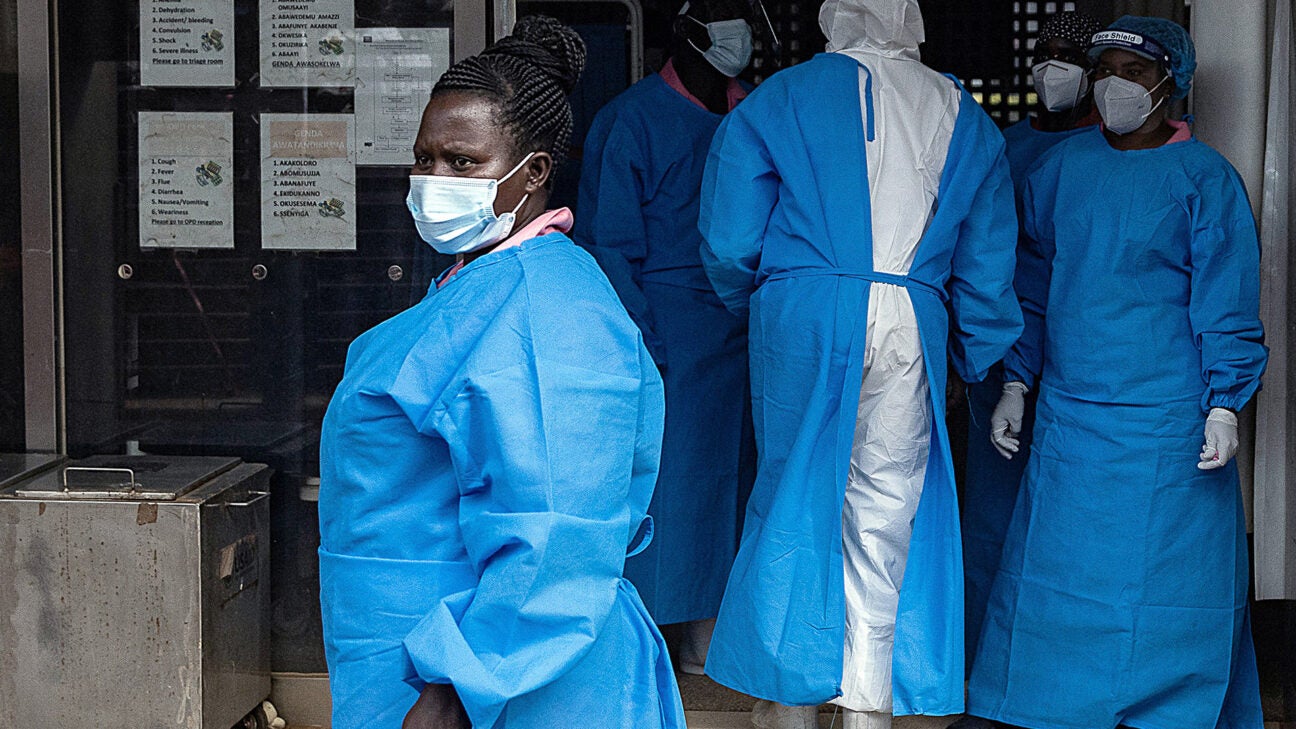
- Health officials in Uganda are dealing with an outbreak of the Ebola virus.
- Potentially at least 23 people have died of 36 cases.
- The virus is a hemorrhagic fever that has a fatality rate that reaches 50% on average.
Ugandan health authorities have declared an outbreak of Ebola in their country as of September 20, 2022. The number of probable deaths is reported to be 23, out of 18 confirmed and 18 probable cases.
The government has confirmed that 11 deaths are the result of the virus.
What is Ebola
Ebola is a viral hemorrhagic fever typically found in sub-Saharan Africa. There are several strains of the virus, but only four have been known to cause illness in humans. It is spread through direct contact between body fluids of any person or animal with the disease and broken skin or mucous membranes of another person who develops the disease.
Symptoms of Ebola include fever, headache, muscle pain, vomiting, diarrhea, weakness, and sore throat. Bleeding from various body openings occurs in later stages of the disease.
First case reported in September
The first case of Ebola from this outbreak was reported on September 11.
A 24-year-old man visited two different clinics with symptoms matching those of Ebola. When his symptoms did not abate he was admitted to the Mubende Regional Referral Hospital on September 15.
A blood sample was collected two days later and sent out to be tested for Ebola virus. The test came back positive on September 19, and the man died later that day.
The hospital has currently set up an isolation unit for Ebola patients, and the World Health Organization (WHO) has sent a technical team to assist in screening for the virus.
How to treat the disease
There are no known treatments for the Sudan Ebola virus, instead all patients are treated with supportive care in hopes of decreasing their symptoms.
While there is a vaccine available for the Ebola virus, it is only approved to prevent one particular strain, the Zaire Ebola virus. This strain has caused the most outbreaks and deaths (the 2013-2016 Ebola outbreak was caused by the Zaire virus), but the strain involved in the Uganda outbreak is the Sudan virus so the vaccine has not been used to stem the outbreak.
Officials could decided to try and see if the vaccine could be effective against Sudan virus, but it would still take time to get the vaccine to peopel at risk. The vaccine needs to be administered through two doses, 56 days apart in order to provide full protection.
Is there any danger of Ebola outbreaks outside of Uganda?
Ebola is known for its high fatality rate. In previous outbreaks anywhere from 25 to 90% of people with the disease died due to symptoms. On average it has a fatality rate of about 50%, according to the WHO.
One huge difference between Ebola and other diseases that have made headlines in recent years like COVID-19 or the seasonal flu, is that it is not as infectious as those diseases.
The disease is not spread through respiratory droplets that can linger in the air but through close contact.
According to Dr. Monica Ghandi, co-director of the UCSF-Bay Area Center for AIDS Research (CFAR) in San Francisco, California, “The infection is not actually spread very readily and requires close contact with infected bodily fluids or blood. Therefore, household contacts or healthcare workers without adequate personal protective equipment (PPE) are usually susceptible.”
The virus can only infect if infected body fluid goes through broken skin or a mucous membrane. Additionally, people do not transmit the disease unless they have symptoms in most cases.
Since a person with active symptoms of Ebola would usually not be allowed on a passenger flight, it is unlikely that the virus will cross oceans, but it is possible that neighboring countries may experience outbreaks.
“There is not a notable threat to persons outside of Africa. Occasionally international healthcare workers return home after working to contain an Ebola outbreak. They can be quarantined until the risk period has passed,” says Dr. William Schaffner, professor of medicine in the Division of Infectious Diseases at the Vanderbilt University School of Medicine, Nashville, Tennessee. The affected regions of Uganda do not border any other countries, three countries (Tanzania, Rwanda, and the Democratic Republic of the Congo (DRC)) are in the same general region. Rwanda has already implemented border screenings, where no-contact temperature readings are taken and travelers asked about their previous destinations.
For those who are in the affected areas of Uganda or are close to them, UNICEF has issued several guidelines to help prevent the spread of Ebola.
- Report any suspected cases as soon as possible.
- If a person is suspected to have Ebola, avoid direct contact with them by use of gloves and masks.
- Use a chlorine mixture on surfaces, clothing and bedding, utensils, and other items that have been in contact with a person with Ebola. Chlorine kills Ebola.
- Anyone who handles the body of someone who has died of Ebola should wear gloves and masks when doing so.
- Wash your hands frequently, and avoid communal hand-washing.
- Keep at least six feet away from others if possible.
Everything to Know About Ebola After Outbreak Detected
Source: Pinoy Lang Sakalam



0 (mga) komento:
Mag-post ng isang Komento